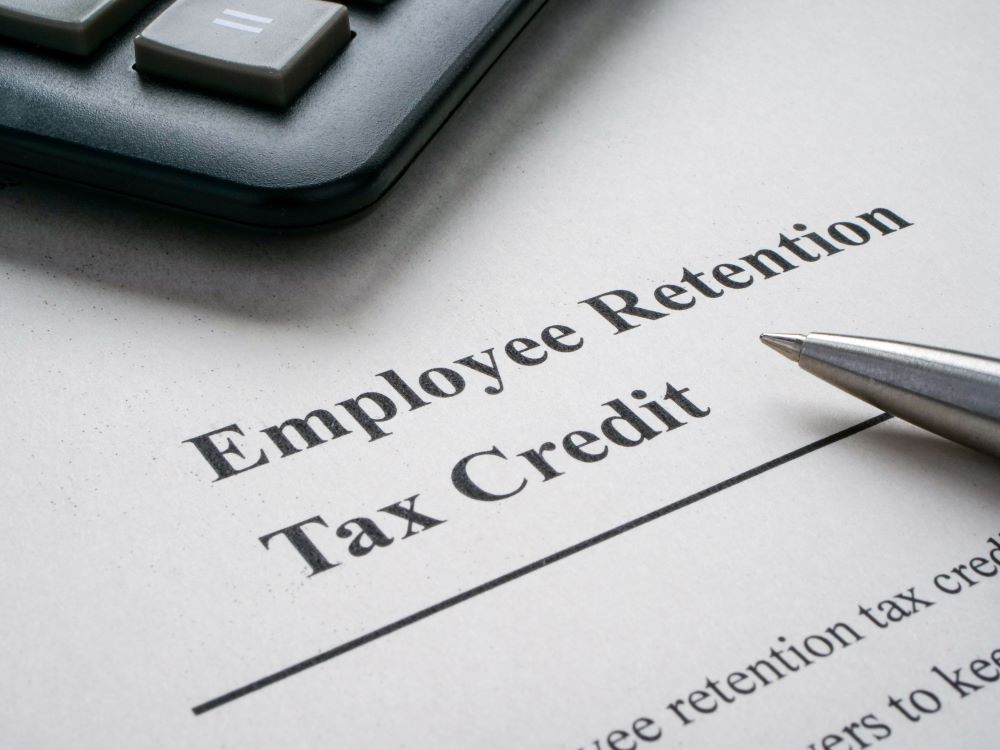Taxes
7 Warning Signs of an Incorrect ERC Claim
The IRS listed several red flags of a questionable employee retention credit claim to help businesses resolve incorrect submissions.
Feb. 15, 2024

The employee retention credit program has become a huge headache—for small business owners, the IRS, and for tax professionals.
The ERC program started out with good intentions. The refundable tax credit, which was authorized by the $2.2 trillion coronavirus package known as the Cares Act, aimed to motivate employers to keep workers on staff during the early days of the pandemic as unemployment rates sharply increased.
But now the IRS is in the midst of a crackdown on fraudulent ERC claims resulting from pop-up businesses, or “ERC mills,” marketing the program to employers that don’t qualify for the tax relief.
As of mid-September 2023, the IRS had received more than 3.6 million ERC claims, but the number of fraudulent submissions got so bad that the IRS stopped processing new claims around that time. The tax agency launched a wider compliance effort working with the Justice Department to address fraud in the ERC program, as well as promoters who have been ignoring the rules and pushing businesses to apply for the tax credit.
The IRS also warned that it assigned auditors—specifically trained to examine ERC claims—to submissions that pose the greatest risk, and the agency’s Criminal Investigation (IRS-CI) division was actively working to identify promoters of fraudulent claims for potential referral for prosecution to the Justice Department.
Last December, the tax agency announced that it had rejected more than 20,000 suspicious claims for the pandemic tax credit.
The agency launched a new program late last year to help businesses that applied for questionable ERCs and received them, particularly companies that may have filed for the credits in error. Businesses interested in taking advantage of the voluntary disclosure program have until March 22 to apply. If accepted, employers will be responsible for repaying 80% of the tax credit to account for the fees charged by these ERC-only shops, and installment agreements will be allowed on a case-by-case basis. Employers will not be required to return any interest received on the claim.
The agency said the voluntary disclosure plan works alongside the agency’s existing ERC withdrawal program, which allows businesses to retract pending ERC claims without facing any interest or penalties.
With that March 22 deadline fast approaching, the IRS on Feb. 13 highlighted several warning signs that an ERC claim may be questionable to help small businesses that may need to resolve incorrect claims.

“IRS compliance activity continues increasing involving employee retention credit claims, and those claiming this pandemic-era credit need to quickly review their situation to avoid future problems,” said IRS Commissioner Danny Werfel. “Many businesses were wildly misled about the qualifications, and the IRS is taking a special step to highlight common problems being seen about these claims. The IRS urges ERC claimants to get with a trusted tax professional and review their qualifications before time runs out on IRS disclosure and withdrawal programs. The ‘suspicious seven’ signs released today are clear red flags that ERC claimants should carefully review.”
The IRS said it wants businesses to know about these warning signs, revisit their claim if there are questions, and act quickly before the special disclosure and withdrawal programs end. Small businesses resolving an incorrect claim through these special IRS programs will avoid penalties and interest.
“We’ve heard from the tax pro community and others that sharing more warning signs can help point well-intentioned people in the right direction,” Werfel said. “Many of these taxpayers were misled by overzealous and unscrupulous promoters taking advantage of honest taxpayers. The most beneficial time to resolve any incorrect claims is now before this special window closes.”
Here are seven of the most common red flags seen on ERC claims that the IRS is focusing on:
1. Too many quarters being claimed
Some promoters have urged employers to claim the ERC for all quarters that the credit was available. Qualifying for all quarters is uncommon, and this could be a sign of an incorrect claim. Employers should carefully review their eligibility for each quarter.
2. Government orders that don’t qualify
Some promoters have told employers they can claim the ERC if any government order was in place in their area, even if their operations weren’t affected or if they chose to suspend their business operations voluntarily. This is false, according to the IRS. To claim the ERC under government order rules:
- Government orders must have been in effect and the employer’s operations must have been fully or partially suspended by the government order during the period for which they’re claiming the credit.
- The government order must be due to the COVID-19 pandemic.
- The order must be a government order—not guidance, a recommendation, or a statement.
Some promoters suggest that an employer qualifies based on communications from the Occupational Safety and Health Administration (OSHA). This is generally not true, the IRS said. See the ERC frequently asked questions about OSHA communications and the 2023 legal memo on OSHA communications for details and examples.
The Qualifying Government Orders section of IRS.gov has helpful examples. Employers should make sure they have documentation of the government order related to COVID-19 and how and when it suspended their operations. Employers should avoid a promoter that supplies a generic narrative about a government order.
3. Too many employees and wrong calculations
Employers should be cautious about claiming the ERC for all wages paid to every employee on their payroll. The law changed throughout 2020 and 2021. There are dollar limits and varying credit amounts, and employers need to meet certain rules for wages to be considered qualified wages, depending on the tax period.
The IRS urges employers to carefully review all calculations and to avoid overclaiming the credit, which can happen if an employer erroneously uses the same credit amount across multiple tax periods for each employee.
For details about credit amounts, see the Employee Retention Credit—2020 vs 2021 Comparison Chart.
4. Business citing supply chain issues
Qualifying for ERC based on a supply chain disruption is very uncommon. A supply chain disruption by itself doesn’t qualify an employer for ERC. An employer needs to ensure that their supplier’s government order meets the requirements. Employers should carefully review the rules on supply chain issues and examples in the 2023 legal memo on supply chain disruptions.
5. Business claiming ERC for too much of a tax period
It’s possible, but uncommon, for an employer to qualify for ERC for the entire calendar quarter if their business operations were fully or partially suspended due to a government order during a portion of a calendar quarter. A business in this situation can claim ERC only for wages paid during the suspension period, not the whole quarter. Businesses should check their claim for overstated qualifying wages and should keep payroll records that support their claim.
6. Business didn’t pay wages or didn’t exist during eligibility period
Employers can only claim ERC for tax periods when they paid wages to employees. Some taxpayers claimed the ERC but records available to the IRS show they didn’t have any employees. Others have claimed ERC for tax periods before they even had an employer identification number with the IRS, meaning the business didn’t exist during the eligibility period. The IRS has started disallowing these claims, and more work continues in this area as well as other aspects of ERC.
7. Promoter says there’s nothing to lose
Businesses should be on high alert with any ERC promoter who urged them to claim ERC because they “have nothing to lose.” Businesses that incorrectly claim the ERC risk repayment requirements, penalties, interest, audit, and potential expenses of hiring someone to help resolve the incorrect claim, amend previous returns, or represent them in an audit.
